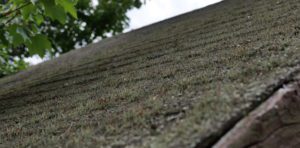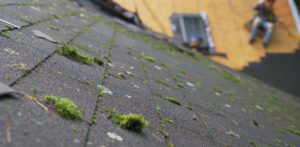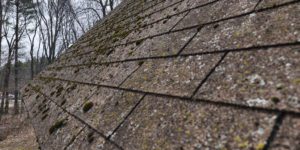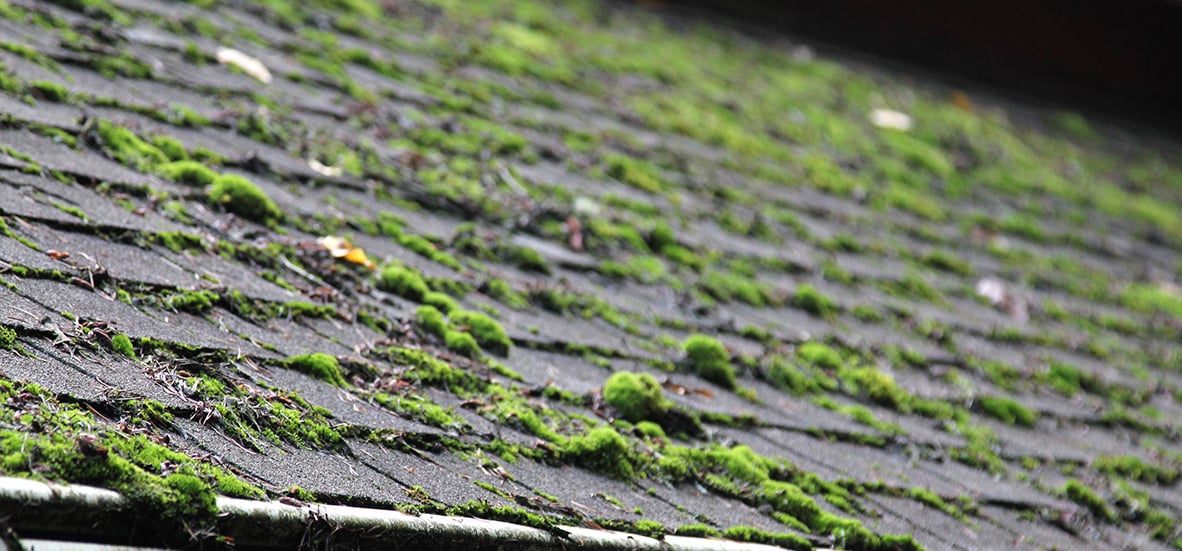What Is Roof Algae and How Do I Fix It?


You can collect more than dirt and leaves on your roof. If left to its own devices, your roofing system may also develop something more unsightly: algae. As bacteria take over, a roof can develop algae, lichens, and fungi. The majority of homeowners mistake algae for “roof mold.” It is actually a type of blue-green algae that leaves dark streaks on your roof when it dies.
It is possible for algae to cause unsightly growths and stains on your new roof. If you do not invest in professional cleaning, it will continue to worsen year after year. In this comprehensive guide from Southers Construction, you’ll find everything you need to know about roof algae.
Learn how to recognize roof algae, what hazards it could pose to your home, and when to call in the professionals for deep cleaning, roof repair, or roof replacement from our residential roofing contractors. Throughout the country, we offer free roof inspections.
How to Recognize Roof Algae
How does roof algae look? Depending on the type of problem you are experiencing, the answer will vary. It is most common for roof algae to appear as some type of discoloration on the roofing material. It is possible that you will notice black stains or streaks, or a blanket of green mossy growth. It is also possible for roof algae to look like mold spots – leading to the common misconception. Mold can grow in your roofing materials if water gets trapped somewhere, but if you notice any of the following on top of your roof, algae are more likely the culprit:
- Black Streaks
- Green or white spots
- Round lichens
- Mosses
- Green moss that spreads across your roof
There is a difference between algae and mold. Humans are less likely to be harmed by algae because it is more common. In the right conditions, algae can overtake a new roof in four years or less. Contact a roofing contractor near you if you notice strange discoloration or vegetative growth on your roof. Algae can be detected by a contractor and the best course of action can be recommended.


What Causes Roof Algae?
Unlike other plants, algae do not have roots or leaves. Algae can grow on roofs in certain environments. It thrives in humid environments where heat and moisture are combined. In shady, damp areas, such as under large trees, algae grow fastest. In order to survive on your home, it also needs nutrients. Most roofing shingles contain limestone filler, which provides nutrients to algae spores. Your roof’s inorganic materials will allow algae to survive, spread, and darken.
Roof algae or fungus usually begins with a single spore. Spores can be blown onto your roof by the wind, and if the conditions are right, they will take off. When there is enough humidity in the air, algae does not need rain to develop. Roof algae can be caused by overhanging branches, clogged gutters, standing water, porous roofing materials, and poor roof ventilation. Stay ahead of algae growth by clearing your roof of common issues.


Common Types of Roof Bacteria
There are many types of roof bacteria. You may think you have roof algae when in fact you have moss, mildew, or mold. Algae on roofs usually have a black-green hue. It is most common for algae to grow on wood, asphalt shingles, or concrete tiles that do not receive a lot of sunlight. Gloeocapsa magma, a bacterium that eats water and exhales oxygen, is the most common roof algae. Your roof may have black stains caused by it. Black stains are buildups of algae that prevent the sun from burning off bacteria.
Roof lichen is a combination of algae and fungi. Living organisms can grow when they depend on each other. The roots of lichens will attach securely to your shingles, making it difficult to remove them. If left untreated, lichen will eventually remove the top layer of your shingles, leaving a permanent scar. Roof moss also has root-like elements that attach to your shingles, just like lichen. Rhizoids are a moss’ “roots,” which can anchor the moss to your roof. By collecting windblown soil and spores, the moss can then form a layer of algae/lichen on your roof.
Mold is not a healthy plant, unlike algae and moss. Mold on the roof can appear as black or brown blotches or as slimy, foul-smelling accumulations. It is possible for mold to grow on your roof if it has absorbed water. Like mildew, mildew grows on damp surfaces and can cause health problems. Mildew can take on a powdery appearance and come in a variety of shades, from black to pink. Your roof, home, and health are all at risk from different types of roof bacteria.
7 Ways Roof Algae Can Affect Your Roof
Roof algae is primarily a visual issue, but roof mold is not. When left untreated, roof mold can cause real, lasting damage to your roof. A professional roof inspection is necessary for any type of damage or stain on your roof.
- Appearance. The appearance of roof algae is one of the first problems homeowners experience. The majority of homeowners discover they have algae only when their roof develops ugly black streaks, dark spots, or green mossy fuzz. Curb appeal can be significantly reduced by roof algae.
- Home value. If you’re trying to sell your home, you may run into issues if you have roof algae. Roof algae are signs that your roofing system could have considerable damage, and may need replacing. This can decrease your home’s resale value, until and unless you schedule repairs. Algae and lichen can adhere to your roof, cause permanent stains, and ultimately damage the underlying materials.
- Rotted wood. It is possible to have a serious problem on your hands if moisture sinks into the wood of your roof. Water standing on wood can soften and rot it, compromising its strength and safety permanently. Roof leaks, expensive repairs, and wood replacement can be caused by wood rot.
- Mold. Mold can also develop in your roofing system when moisture is trapped. In combination with standing water and humidity, algae spores can breed harmful mold. The presence of mold in your home can pose serious health risks to you and your family.
- Continuity. An algae and/or mold situation on your roof could damage its integrity beyond simple repairs if left untreated. If algae is allowed to take over your roofing system for years, it may irreparably damage the tiles, reducing the lifespan of a new roof. An unstable roof could be forced to be replaced by rotting wood.
- Other structures are damaged. Algae spores can easily travel on the wind and attach to other structures on your property. Roof algae may start on your home, but it won’t be long before you notice similar growth on sheds, barns, and carports as well. The problem could even spread to neighbors’ homes.
- Algae, fungus, mildew, moss, and mold on your roof can eventually harm your health. Mold and mildew spores can cause respiratory problems, allergies, asthma, nausea, vision problems, and other health problems. Once you notice algae on your roof, you need to act quickly.


Getting Rid of Roof Algae
When it comes to dealing with roof algae, prevention is always the best option. You cannot control whether the wind deposits spores on your roof, but you can prevent them from developing into algae. The roof must be made uninhabitable for spores. By trimming back overhanging branches, you can increase the amount of sun on your roof. Ensure your roof wicks water away properly by scheduling regular roof and gutter maintenance. If you live in a humid area, you may want to consider algae-resistant roofing materials. Alternatively, you could treat your shingles or shakes with chemicals that are moisture-resistant.
When it is too late to prevent algae, treat it instead. You should not attempt to remove algae from your roof on your own. DIY roof algae cleaning with bleach and water could result in expensive roof leaks or further moisture getting trapped beneath your shingles. If you don’t take precautions, it could also put your health at risk.
Additionally, removing the fungus unprofessionally could damage your shingles, stripping them of granules and causing unsightly bald spots. Professionals should always be trusted with roof algae repair.


The Best Time to Call Roofing Professionals…
The best way to deal with roof algae is to hire a licensed roofing contractor. Your roofing system can be inspected by a professional, underlying problems can be identified, and your roof can be cleaned without causing further damage. A contractor can then recommend ways to prevent algae growth in the future, such as applying special roof coatings or replacing gutters. A contractor can schedule repairs if algae has damaged your roof.
You should Contact a Roofing Professional as soon as you notice signs of algae growth on your roof. You will have a harder time treating it if you wait too long. Don’t let deeper issues ruin your time, money, and hassle by calling a roofer right away. Call a professional roofing expert if you notice discoloration, watermarks, dark spots, peeling paint, mold on your chimney, rotting wood, or crumbling drywall. It could lead to property damage and health problems.



